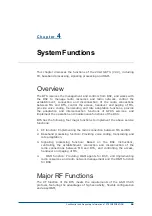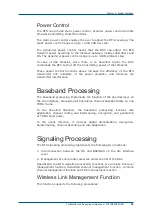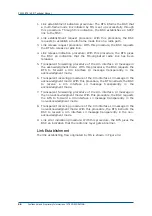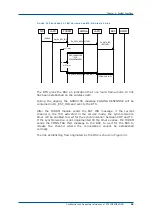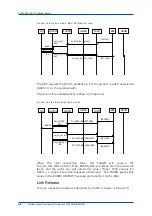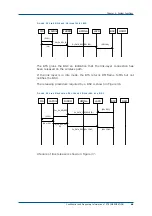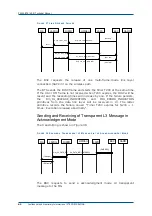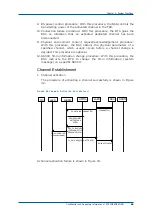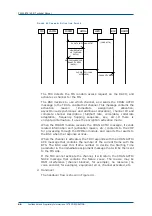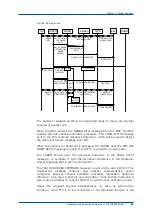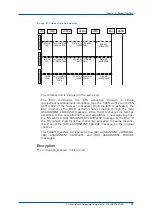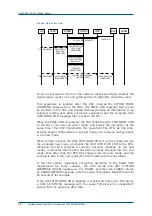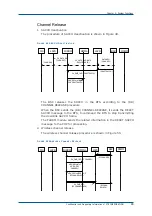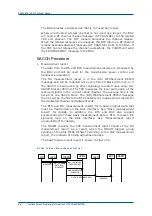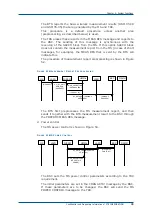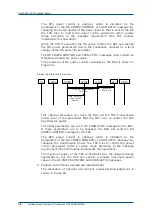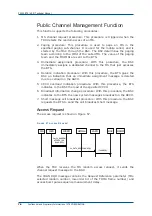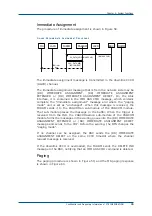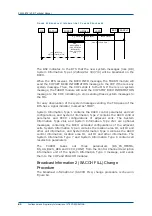
ZXG10-BTS (V2.9) Technical Manual
68
Confidential and Proprietary Information of ZTE CORPORATION
send four (RR) HANDOVER ACCESS messages on the active DCCH in one
access burst, whose content is the handover reference information unit.
The BTS starts message transmission immediately over the active channel
in the specified mode. The message is encrypted if there is an encryption
indication. If there are MS power and time lead, or only MS power, the
BTS will use the parameter to start the send on SACCH. When the BTS
receives one access burst with correct handover reference or one correct
decoding frame, the BTS starts the normal receiving procedure on the
active channel and SACCH, and starts the handover detection procedure
that is sent to the BSC. The measured access burst delay is contained in
the HANDO DET message.
In asynchronous handover, when MS is connected to the allocated channel,
the first half procedure is the same as that in the synchronous handover
(see above).When the HANDO DET message is sent, the BTS sends the
(RR) PHY INFO message to MS in non-acknowledgement mode on the
active signaling channel, and starts T3105 at the same time. If T3105
expires before a correct decoding frame is received, the message will be
resent. If no correct decoding frame is not received when the message has
been resent for Ny1 times, the BTS will send to the BSC a CONNECTION
FAILURE message with the cause “Handover access failed”. When the
message is received, the network side will disconnect the new channel.
Then, it enters the RR session release procedure to release the channel
and link.
Pseudo-synchronous cell case: Same to the synchronous case. When the
bottom connection is established, the MS returns a (RR) HANDOVER
COMPLETE message (transparent) on the active DCCH. If the bottom
connection fails, the MS returns a HANDOVER FAILURE message. When
the message is received, the network side will disconnect the new channel
and enter the RR session release procedure.
The two parameters T3105 and Ny1 are sent by the OAMM module to the
FURRM during the system initialization.
Remarks: Same to the link establishment. For the service mode TCH
channel, the synchronous message is waited for after the link
establishment.
Channel Mode Change
1. Mode modification
The successful mode modification is shown in Figure 45.
Содержание ZXG10-BTS
Страница 4: ...This page is intentionally blank ...
Страница 8: ...Figures 121 Tables 123 ...
Страница 9: ...This page is intentionally blank ...
Страница 10: ......
Страница 16: ...Confidential and Proprietary Information of ZTE CORPORATION xvi This page is intentionally blank ...
Страница 134: ...118 Confidential and Proprietary Information of ZTE CORPORATION This page is intentionally blank ...


